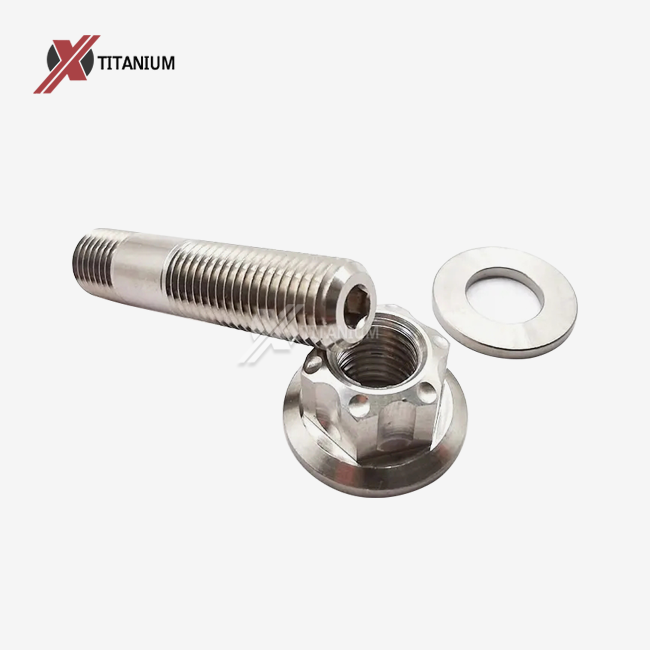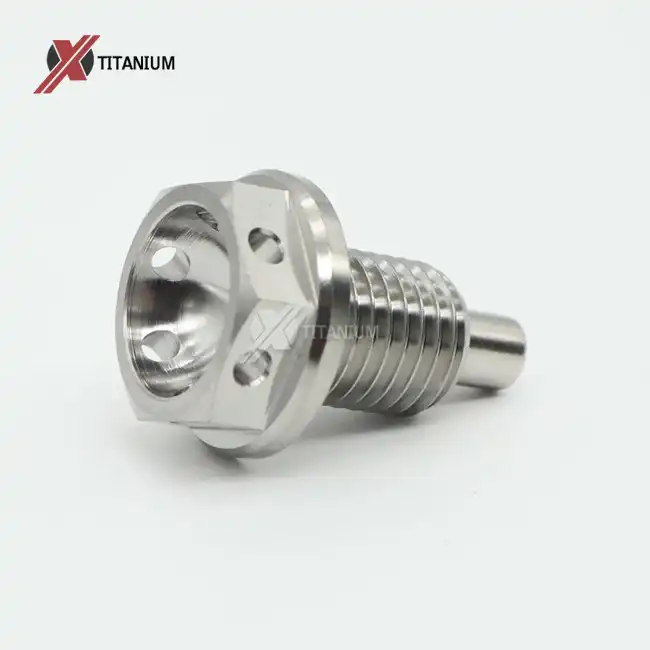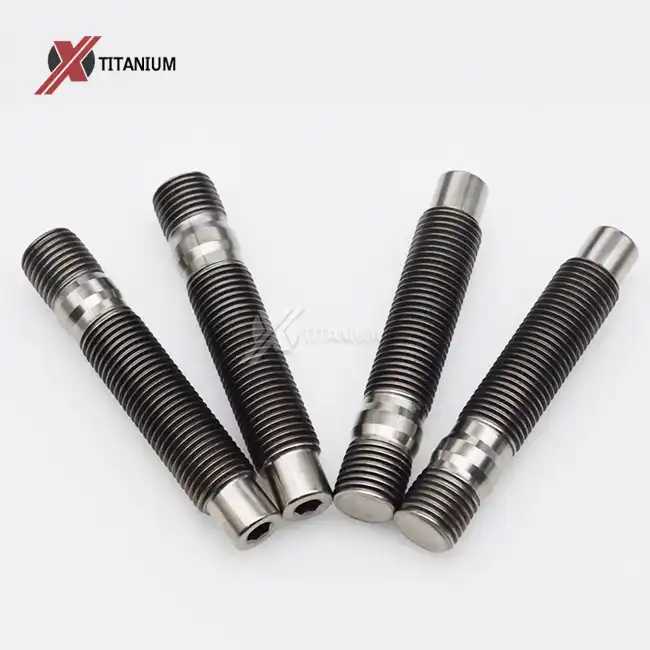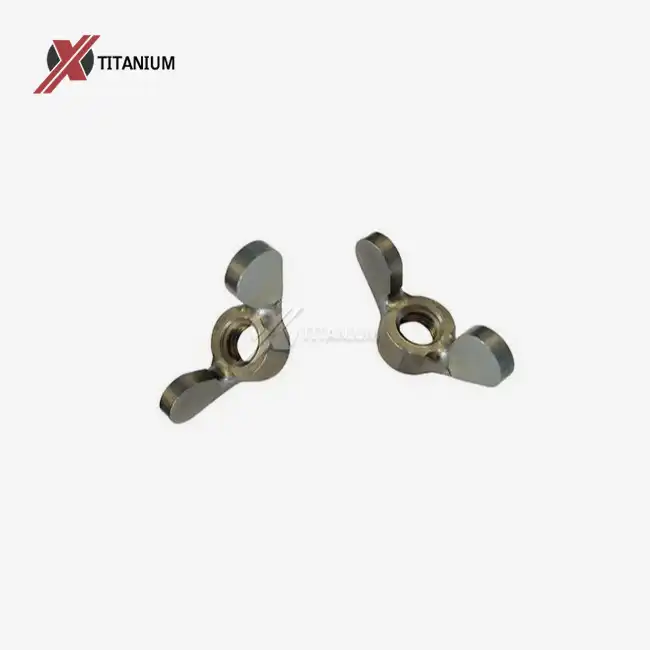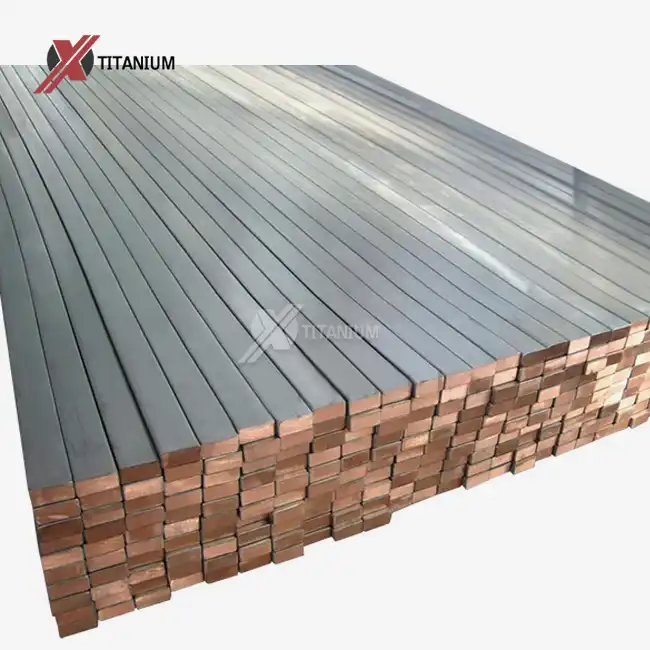The Science Behind Titanium's Superior Performance in Racing Applications
Understanding the scientific principles that make titanium exhaust bolts superior in racing applications is crucial for appreciating their widespread adoption in high-performance motorsports. The unique atomic structure and material properties of titanium alloys contribute to their exceptional performance under extreme conditions.
Atomic Structure and Material Properties
Titanium's hexagonal close-packed (HCP) crystal structure is fundamental to its strength and heat resistance. This atomic arrangement allows for a high strength-to-weight ratio, making titanium exhaust bolts significantly lighter than their steel counterparts while maintaining comparable or superior strength. The HCP structure also contributes to titanium's excellent fatigue resistance, crucial for withstanding the repeated stress cycles experienced in racing environments.
Moreover, titanium forms a stable, protective oxide layer when exposed to oxygen. This natural passivation process enhances the material's corrosion resistance, protecting titanium exhaust bolts from degradation caused by hot exhaust gases and environmental factors. The oxide layer is self-healing, regenerating if damaged, which further contributes to the longevity of titanium components in harsh racing conditions.
Thermal Properties and Heat Resistance
One of the most critical aspects of titanium's performance in racing applications is its exceptional heat resistance. Titanium exhaust bolts maintain their strength and structural integrity at temperatures far exceeding those at which steel bolts begin to degrade. This is due to titanium's high melting point (approximately 1,668°C) and low thermal conductivity.
The low thermal expansion coefficient of titanium alloys is another significant advantage. This property means that titanium exhaust bolts experience minimal dimensional changes when subjected to extreme temperature fluctuations. Consequently, they maintain a tighter seal and are less prone to loosening under thermal cycling, a common issue with exhaust systems in high-performance racing vehicles.
Mechanical Strength and Fatigue Resistance
Titanium alloys used in exhaust bolts, such as Ti-6Al-4V (Grade 5), offer an impressive combination of high tensile strength and low density. This allows for the design of lightweight yet incredibly strong fasteners that can withstand the intense forces and vibrations present in racing environments. The high fatigue strength of titanium is particularly beneficial, as it enables the bolts to endure repeated stress cycles without failure, a crucial factor in ensuring the longevity and reliability of exhaust system components during extended racing sessions.
Design Considerations for Titanium Exhaust Bolts in Racing
The implementation of titanium exhaust bolts in racing applications requires careful consideration of various design factors to maximize their performance and reliability. Engineers and designers must take into account several key aspects when incorporating these high-performance fasteners into exhaust systems.
Thread Design and Bolt Geometry
The thread design of titanium exhaust bolts plays a crucial role in their performance. Coarse threads are often preferred in racing applications as they provide better resistance to vibration-induced loosening and offer improved load distribution. Additionally, the thread pitch must be optimized to balance between ease of installation and resistance to backing out under extreme conditions.
Bolt geometry is another critical factor. Racing-specific titanium exhaust bolts often feature a wider flange or a larger head diameter to distribute load more evenly and reduce the risk of bolt pull-through. Some designs incorporate serrations or knurling on the underside of the bolt head to increase friction and further prevent loosening.
Surface Treatments and Coatings
While titanium naturally forms a protective oxide layer, additional surface treatments can enhance the performance of exhaust bolts in racing conditions. Anodizing is a popular treatment that not only improves corrosion resistance but also allows for color coding, which can be beneficial for quick identification during maintenance or assembly.
Advanced coatings such as Physical Vapor Deposition (PVD) or Diamond-Like Carbon (DLC) can be applied to titanium exhaust bolts to further improve their wear resistance and reduce friction. These coatings can also help prevent galling, a common issue when using titanium fasteners, especially in high-temperature applications.
Integration with Exhaust System Design
The integration of titanium exhaust bolts with the overall exhaust system design is crucial for optimal performance. Designers must consider the thermal expansion characteristics of all components to ensure proper fit and sealing throughout the operational temperature range. This may involve the use of specialized gaskets or sealing compounds compatible with titanium and capable of withstanding extreme temperatures.
Moreover, the placement and number of bolts must be carefully calculated to provide adequate clamping force while minimizing weight. In some cases, this may lead to a redesign of flange geometries or the incorporation of additional support structures to ensure the integrity of the exhaust system under the intense conditions of racing.
Maintenance and Longevity of Titanium Exhaust Bolts in Racing Environments
The maintenance and longevity of titanium exhaust bolts are critical factors in ensuring consistent performance and reliability in high-stakes racing environments. While these specialized fasteners offer superior durability compared to traditional alternatives, proper care and attention are essential to maximize their lifespan and effectiveness.
Proper Installation Techniques
Correct installation is paramount for the optimal performance of titanium exhaust bolts. Unlike steel bolts, titanium fasteners require specific torque values and installation procedures to prevent damage and ensure proper clamping force. Over-torquing can lead to thread galling or bolt failure, while under-torquing may result in loosening during operation.
Hustling groups and mechanics must utilize calibrated torque torques and take after manufacturer-specified torque arrangements. Anti-seize compounds particularly defined for titanium ought to be connected to anticipate string seizure, which can happen due to the metal's propensity to cold-weld beneath tall weight and temperature.
Inspection and Replacement Schedules
Regular inspection of titanium exhaust bolts is crucial in racing applications. Despite their durability, these fasteners can experience wear or damage over time due to the extreme conditions they endure. Visual inspections should be conducted after each race or testing session, looking for signs of discoloration, deformation, or surface degradation.
Establishing a proactive replacement schedule based on racing hours or thermal cycles can prevent unexpected failures. Some high-performance racing teams opt to replace titanium exhaust bolts as a precautionary measure at regular intervals, even if no visible wear is apparent, to ensure peak performance and reliability.
Addressing Thermal Cycling and Stress Relaxation
Warm cycling in hustling situations can lead to stretch unwinding in titanium deplete jolts over time. This marvel can result in a diminishment of clamping constrain, possibly compromising the seal of the deplete framework. To relieve this issue, intermittent re-torquing of the jolts may be essential, taking after the manufacturer's rules for recurrence and torque values.
Progressed checking procedures, such as ultrasonic jolt pressure estimation, can be utilized to precisely evaluate the clamping drive of titanium deplete jolts without the require for dismantling. This non-destructive testing strategy permits dashing groups to keep up ideal jolt pressure all through the dashing season, guaranteeing reliable execution and minimizing the chance of debilitate spills or component disappointment.
Long-Term Cost Considerations
Whereas the starting fetched of titanium deplete jolts is higher than that of conventional steel clasp, their life span and execution benefits frequently result in long-term taken a toll investment funds for hustling groups. The decreased require for visit substitutions, coupled with the weight investment funds and execution preferences, can legitimize the speculation in these high-quality components.
Furthermore, the use of titanium exhaust bolts can contribute to reduced maintenance time and improved reliability, factors that are invaluable in competitive racing environments where every second counts, both on and off the track.
Conclusion
Titanium exhaust bolts have proven to be indispensable components in high-temperature racing applications, offering a unique combination of strength, heat resistance, and lightweight properties that consistently outperform traditional fasteners. Their ability to maintain structural integrity under extreme conditions, resist corrosion, and contribute to overall vehicle performance makes them a preferred choice for racing teams and performance enthusiasts alike.
As racing technology continues to evolve, the role of titanium exhaust bolts in enhancing vehicle performance and reliability is likely to grow. Their superior characteristics not only address the immediate challenges of high-temperature racing environments but also contribute to the broader goals of efficiency and innovation in motorsports.
For those seeking to elevate their racing performance or explore the benefits of titanium components in automotive applications, Baoji Chuanglian New Metal Material Co., Ltd. offers expertise in titanium product manufacturing and customization. To learn more about our range of titanium exhaust bolts and other high-performance titanium products, please contact us at info@cltifastener.com or djy6580@aliyun.com.
